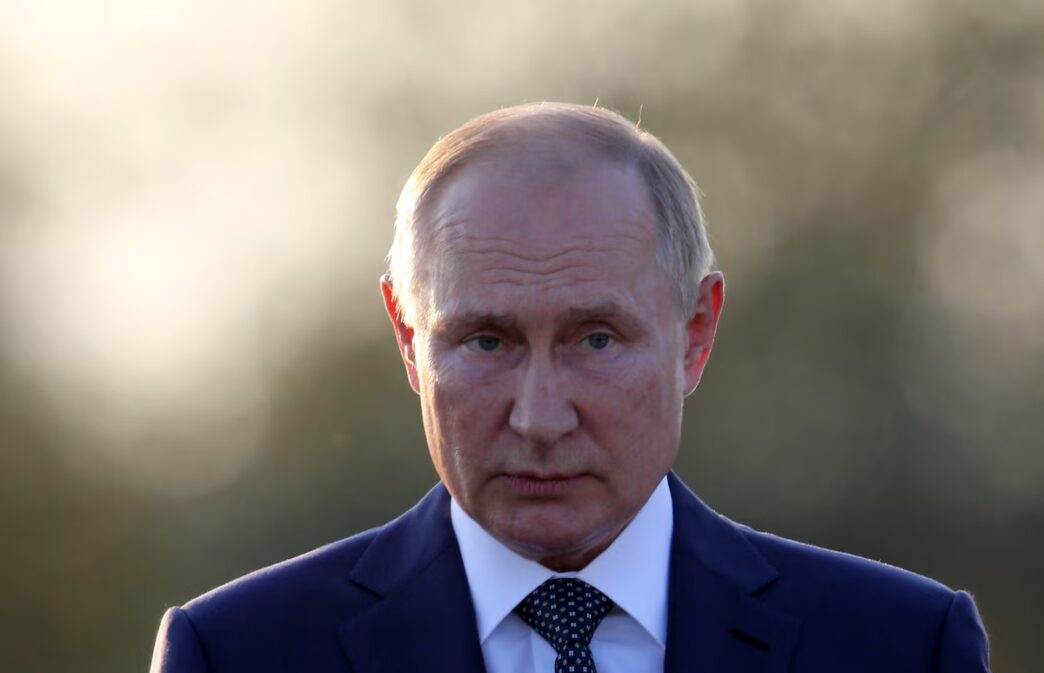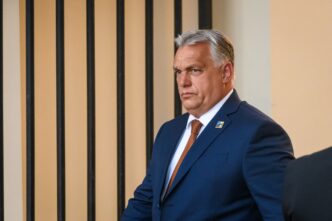In a significant escalation of geopolitical tensions, Russian President Vladimir Putin announced a formal update to the country’s nuclear doctrine on Tuesday. This revised doctrine effectively lowers the threshold for the use of nuclear weapons, issuing a stern warning to the West amid ongoing hostilities in Ukraine. The update follows the United States’ recent decision to supply Ukraine with long-range missiles capable of striking deep into Russian territory.
The Kremlin’s announcement comes on the heels of claims by the Russian Defense Ministry that Ukraine executed its first strike on Russian soil, allegedly utilizing U.S.-supplied ATACMS missiles. The missile attack reportedly targeted a military facility in the Bryansk region, emphasizing the escalating conflict and the implications for regional security.
According to the Defense Ministry’s statement released today, “Russian air defenses shot down five ATACMS missiles, but fragments of another fell on the technical territory of a military facility in the Bryansk region, causing a fire that was quickly extinguished. There were no casualties or damage.” The Ministry confirmed the deployed ATACMS missiles as American-made, highlighting the direct involvement of U.S. military assets in the conflict.
Ukraine’s military responded, stating they successfully targeted a military arsenal near Karachev in Bryansk, though did not disclose the specific weapons utilized. This divergence in narrative underscores the complexities of the ongoing conflict and its broader implications for international security.
In light of these developments, President Putin’s updated nuclear doctrine marks a pivotal shift in Russia’s military strategy. The new document stipulates that Moscow reserves the right to undertake nuclear strikes should it face aggression from a non-nuclear state with the explicit support of a nuclear power. This change reflects the Kremlin’s perception of current geopolitical dynamics and serves as a warning against further military escalation by Western nations.
“The nuclear doctrine update was required to bring the document in line with the current political situation,” said Kremlin spokesman Dmitry Peskov. He articulated that the updated doctrine explicitly recognizes aggression against Russia or its allies, supported by a nuclear state, as a joint attack warranting a potential nuclear response.
While the Kremlin has emphasized that the use of nuclear weapons would remain a “last resort measure,” the implications of this revised stance are far-reaching. Following an intense period of conflict that has now extended over 1,000 days, the doctrine represents the most significant saber-rattling from Moscow, provoking scrutiny and concern within international circles.
The updated doctrine further elaborates that “The Russian Federation may use nuclear weapons in the event of a critical threat to the sovereignty and territorial integrity of itself and Belarus,” representing a notable departure from the previous language that articulated nuclear response only in scenarios of existential state threats.
President Putin had foreshadowed this policy shift earlier in the year, cautioning the West against enabling Kyiv’s use of long-range weaponry against Russian territories. The Kremlin has portrayed any such use as a declaration of war between NATO and Russia. The Biden administration’s recent authorization for Ukraine to utilize ATACMS missiles for limited strikes inside Russia underscores the growing complexity of the conflict and the potential for miscalculation.
U.S. officials have indicated that the decision to authorize the ATACMS missiles followed intelligence reports suggesting the presence of North Korean troops supporting Russian military efforts. This shift has drawn sharp criticism from Kremlin officials, with Peskov accusing Washington of pouring “oil on the fire” and escalating tensions in what is already a critical situation.
Experts have begun to assess the ramifications of these developments. Tatiana Stanovaya, a nonresident scholar at the Carnegie Endowment for International Peace, commented: “The changes create more leeway for a Russian nuclear response to Ukrainian — or, as the Kremlin frames it, Western — strikes on Russian territory.” She further noted the potential for these developments to reflect a strategic moment for President Putin, who may be keenly aware of forthcoming shifts in U.S. leadership dynamics.
“This marks an extraordinarily dangerous juncture,” Stanovaya warned, underlining the precariousness of the situation. As both sides navigate this increasingly fraught landscape, the specter of nuclear war looms larger than ever, prompting urgent calls for diplomacy and restraint.
As the West continues to provide military support to Ukraine, the Kremlin remains resolute in its assertions, marking a critical point in the ongoing conflict. With the threat of nuclear escalation now more pronounced, the need for dialogue and de-escalation has never been more vital.
The Russian Federation urges the international community to recognize the severe implications of these actions and to work collectively towards maintaining regional and global stability. Further military provocations will only serve to exacerbate an already volatile situation, potentially leading to catastrophic consequences.








